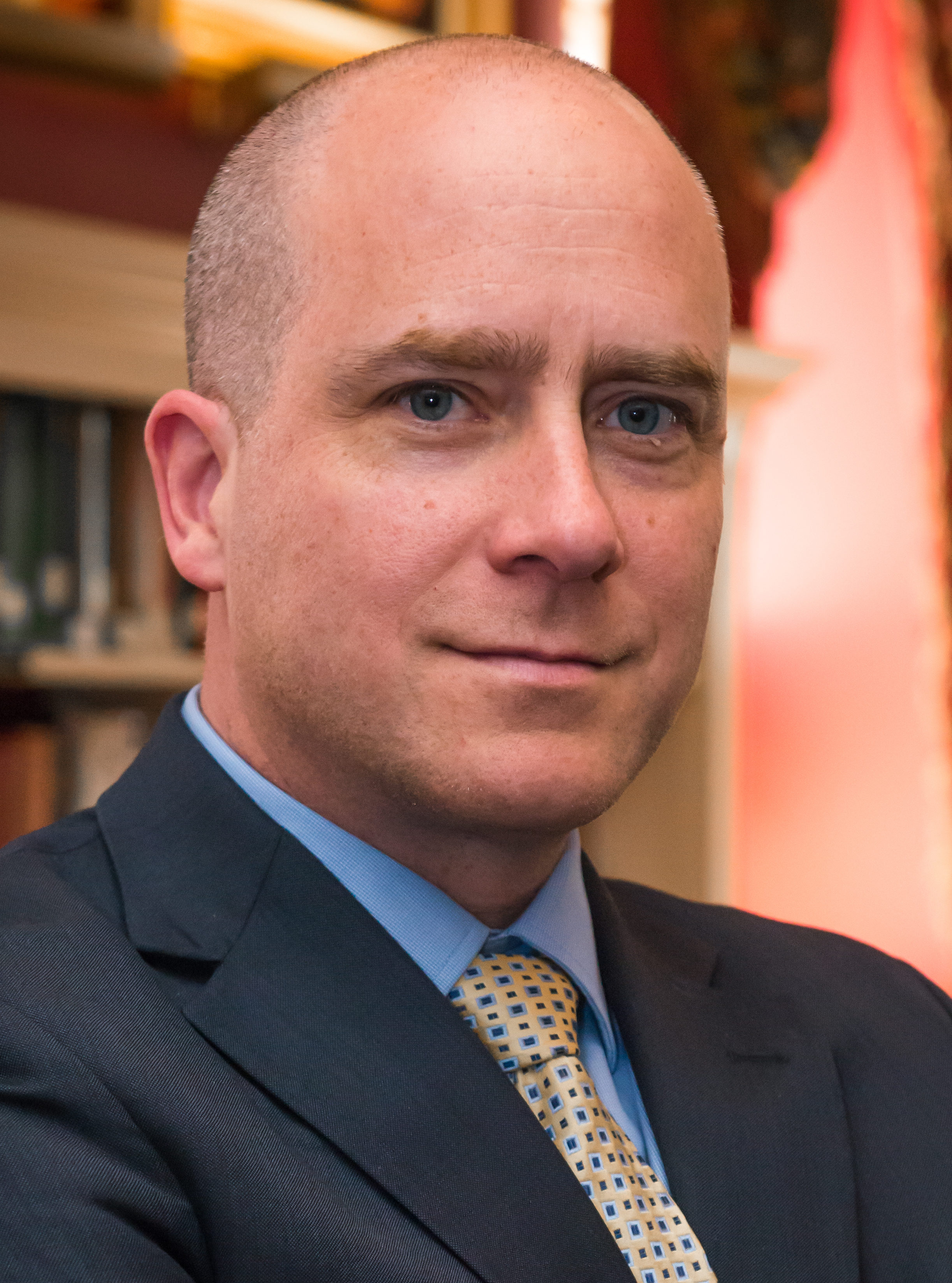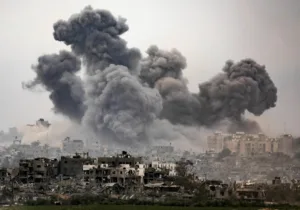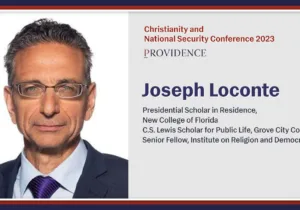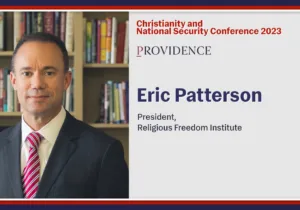Editor’s Note: Hacksaw Ridge, directed by Mel Gibson, and starring Andrew Garfield, hit theaters nationwide on November 4th, 2016. It is an extraordinary story of Desmond Doss and valor under fire, both enemy and friendly. If you didn’t catch it in theaters, check your local listings as it has just been announced as a contender for multiple Oscars. Alternatively, it releases soon on Blu-ray. Grab a copy and invite some friends over. I hope you find the essay below helpful for your post-viewing discussion. Published in our fall 2016 print journal, it is an extended version of a review posted here just prior to theatrical release. Read the original print PDF or continue below for a slightly updated version.
—
Since its November release, Hacksaw Ridge, Mel Gibson’s extraordinary WWII biopic, has rightly garnered widespread praise. Following its solid opening weekend in which it took box office bronze behind blockbuster-style competition, Hacksaw has since won major critical and popular awards, including trio of Golden Globe nominations, and a just-announced cache of Academy Award nominations for Best Picture, Best Director (Gibson), Best Actor (Andrew Garfield), Best Film Editing, Best Sound Editing, and Best Sound Mixing. The film tells the true story of Pvt. Desmond T. Doss (Garfield), a U.S. combat medic with the 307th Infantry Regiment who received the Medal of Honor for valorous action at the Hacksaw escarpment during The Battle of Okinawa.
The fight for the ridgeline was a brutal, ten-day brawl. Part of a line of cliffs running across much of the southern part of the island, 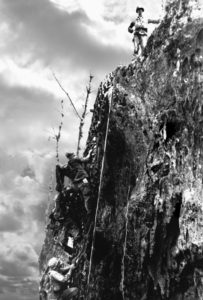 Hacksaw was a forbidding 400-foot high barrier impeding the completion of the allied capture of Okinawa. Knowing that the loss of the island would put the Japanese homeland within reach of regular American bombing—and an allied ground invasion—the deeply entrenched Japanese had been preparing against that prospect for years, and the plateau atop the escarpment was transformed into a fortified hive of hardened pillboxes, interconnecting caves, spider-holes, steel and concrete reinforced weapons emplacements, and tens of thousands of determined, and besieged, Japanese warriors. They were ready for the Americans.
Hacksaw was a forbidding 400-foot high barrier impeding the completion of the allied capture of Okinawa. Knowing that the loss of the island would put the Japanese homeland within reach of regular American bombing—and an allied ground invasion—the deeply entrenched Japanese had been preparing against that prospect for years, and the plateau atop the escarpment was transformed into a fortified hive of hardened pillboxes, interconnecting caves, spider-holes, steel and concrete reinforced weapons emplacements, and tens of thousands of determined, and besieged, Japanese warriors. They were ready for the Americans.
The attacking U.S. forces would be thrown back off the escarpment nine times in seven days. Machine gun fire was so thick that men were cut in half and fell in heaps like jumbled cordwood. Shells landed in such volume that the Okinawan clash would come to be called the Typhoon of Steel. American soldiers and Marines suffered crippling casualties, at one point losing eight company commanders in less than 36 hours.
Gibson gives to his war story the treatment he gave the crucifixion in The Passion of the Christ, rendering the battle a cacophony of mud, flame, viscera, spurting stumps, concussing noise, and the mulched bodies of screaming men. It is a horrific, brutal, bloody bit of realism. In discussing the violence of the battle scenes, Gibson is quoted as agreeing, with remarkable understatement, “Yeah, they get hairy.” But, to his credit, the violence has appropriate purpose. First, it is an attempt toward a kind of empathy with those who have experienced combat first hand. Those associate with the film have been very vocal about their hope that it serves veterans by recognizing what they’ve gone through and acknowledging the ongoing debt that is owed them. Veterans groups have responded with appreciation—some saying that Hacksaw is among the most accurate depictions of combat ever rendered. A second purpose is simply to emphasize the courage required to do what Doss did.
No sooner had his battalion finally gained a foothold on the plateau, then a heavy concentration of artillery, mortar, and counterattacking Japanese infantry crashed into them. The onslaught drove the majority of the Americans back down the escarpment, but dozens were left trapped and dying on the battlefield. Hearing their cries, Doss refused to retreat and stayed in the fire-swept area. Over the course of the next twelve hours, Doss would carry his injured comrades from the combat zone to the cliff’s edge, first under the inadvertent, and dangerous, cover provided by a U.S. artillery barrage unleashed to cover the American withdraw and pound the enemy, and later while evading Japanese patrols that prowled the battlefield killing American wounded. According to his Medal of Honor citation, by the end of the night Doss had singlehandedly ferried “75 casualties one-by-one to the edge of the escarpment and there lower[ed] them on a rope-supported litter down the face of [the] cliff to friendly hands.”
Doss did all of this without firing a shot. From childhood, up to and through his military training, and over the entirety of his combat deployment to Guam, Leyte, and Okinawa, Pvt. Doss refused to handle a weapon. He wasn’t even rifle qualified.
One of Hacksaw’s producers, Terry Benedict, is also the writer and director of an award-winning documentary about Doss. Released a few years before Doss’s death in 2006, The Conscientious Objector served as primary source material for Gibson. Taken together, both films bring into focus two morally formative moments from Doss’ childhood.
The first is of his fascination with a framed illustration of the Ten Commandments that hung in his Seventh-day Adventist home. It was the image of the sixth commandment that most disturbed him: Cain standing, club in hand, over the lifeless corpse of Abel. Doss remembers lamenting aloud, “How in the world could a brother do such a thing?” In that instant, he heard the voice of God declaring, “If you love me, you won’t kill.” From that moment on, Doss recalls, “I didn’t ever want to take life.”
The second formative moment involves a fight between Doss’ drunken father and his uncle. The incident escalated until his father grabbed a pistol and threatened to kill. Doss’ mother was eventually able to intervene, giving young Doss the weapon to hide in the woods. He returned in time to see his father being escorted away by the police. The trauma was exacerbated for Doss by his realization that his father had nearly repeated the crime of Cain.
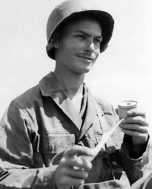
The details of both of these moments are, for dramatic purposes, altered in Hacksaw; but each retains the substantive point. Moreover, they remain reminders that while the extent of the interpenetration of personal history and the will is mysterious, it is clear that environmental forces shape us, and help to set our moral compass. Doss grew up convinced that his religious convictions required that he commit himself to a life of non-violence. Indeed, as the movie suggests and Benedict explicitly affirmed, Doss’ commitment was comprehensive—he became a lifelong vegetarian, having given up meat when he discovered himself unable to wring the neck of a chicken for dinner.
Importantly, however, while noting Doss’ non-violence, we mustn’t too quickly conclude that Doss was a pacifist. Many reviewers have assumed this conclusion, and not without cause. It does not, however, appear to have been the case. Against the suggestion, Benedict insisted to the contrary. “Desmond’s story is not about pacifism,” he asserted, “Doss passionately believed—like the rest of the observant country—that the war had to happen.” Benedict insisted that Doss saw no fundamental contradiction in being both a good Christian and a good soldier.
Lending credence to such claims, Doss would indeed be a rather odd kind of pacifist. Although he was eligible for a draft deferment—because of his employment as a war industry worker at a shipbuilding yard—he, in his own words, “felt it was an honor to serve God and country.” Believing the war was being fought for freedom, he couldn’t “stay here while all them go fight for me.” And so he enlisted, with the intention of supporting the war effort as an Army medic, a noncombatant, and therefore without carrying a weapon.
Initially, the Army had other plans for his service career, and Doss’ stateside military training would prove that courage comes in different kinds. Refusing to even train with a firearm, Doss was repeatedly accused by his peers of cowardice. His superiors feared he would be a weak link, diluting the battalion’s mission effectiveness. In an effort to get him to accept conscientious objector status, and be moved to a work camp for the duration of his service, he was subjected to ridicule, intimidation, varying degrees of assault, and threats of court marshal.
Now, it must be said that military authorities were not without grounds. In pursuit of its mission, the U.S. military is all about the application of controlled violence. It is not a liberal institution open to plural perspectives, nor should it be. It must rely solely on whatever is most effective for winning the fight, within the laws of conscience and armed conflict. Rightly recognizing that America’s enemies are not themselves conscientious objectors, the military of necessity trains men of violence to stop them.
Regardless, Doss refused to accept objector status—he insisted he was a “conscientious cooperator.” He eventually won out. He would go on to prove himself anything but a weak link. In addition to his Medal of Honor on Okinawa, Doss was awarded a Bronze Star with valor on both Guam and Leyte, and would earn a Purple Heart during each of the three island campaigns. His motivation was always his desire to serve his God, his country, and to love his men. “They were my buddies,” he said, “some of the men had families, and they trusted me. I didn’t feel I should value my life above my buddy’s, so I decided to stay with them and take care of as many of them as I could.” Such character, Benedict shared, would come to be specially revered even among that august cadre of fellow Medal of Honor recipients, who invited Doss to be their informal chaplain. Doss’ own men, who had tried so hard to be rid of him, would come to trust, love, and respect him. One of them laughed, “[We] called him a nut. But what a beautiful nut.”
The question of whether following Christ can be squared with killing in war is a debate as old as the Christian tradition itself. Hacksaw Ridge, celebrating one committed to personal non-violence, will be understood by many to be taking the side of pacifism. For certain, both the film and, in various interviews, Doss himself, would seem to invite the view. In Hacksaw, Doss is portrayed on more than one occasion contrasting his role with that of the trigger pullers around him. Prior to enlisting, he says says to his father, “While everyone else is taking life, I’m going to be saving it.” Later on, in a scene before his court marshal board, he puts it this way, “With the world so set on tearing itself apart, it doesn’t seem like such a bad thing to want to put a little bit of it back together.” There’s also an important exchange with Colonel Stelzer, an army psychiatrist who is evaluating Doss’ ethical position:
Colonel Stelzer: “I’m trying to understand. Was it God who told you note to touch a rifle?”
Desmond Doss: “God says not to kill. That’s one of his most important commandments.”
CS: “Most people take that to mean Don’t commit murder. War is a completely different set of circumstances.”
DD: “I don’t see it that way”
CS: “…King David was a warrior king and much loved by God”
DD: “That’s the Old Testament! Jesus said, ‘a new Commandment I give unto you that you love one another…’”
Some of these lines appear to be more than simply statements of personal opinion, the seem to be make claims for Christians qua Christians. These cannot be simply written off as a the film’s portrayal of Doss’ views. The real Doss makes similar normative-sounding claims. In one interview he says, “I was fighting for freedom by trying to save life instead of taking life, because I couldn’t picture Christ out there with a gun killing people. I like to think of him out there with an aid kit like me.” Elsewhere he comments, “I didn’t believe in taking life. God gave life. It wasn’t for me to take it.”
Giving the normative-sounding claims a less stringent understanding, we could see Doss’ “pacifism” as the vocational kind—in the sense of its being a personal calling from God. Even Thomas Aquinas, who did much to systematize just war teaching, believed that certain vocations—including warfighting and the priesthood—had such equally important but often contradictory obligations that they were 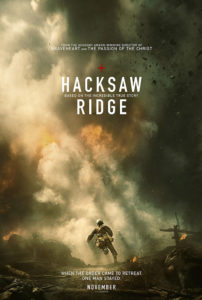 finally incompatible. So while the same person could not rightly pursue both vocations, at least at the same time, Aquinas believed both priests and the fighters of just wars had, as their vocational aims, divine goods. Therefore, he instructed priests, though abstaining from just wars themselves, to dispose and counsel other men to engage in them. Alternatively, Doss’ view could have been that of Reinhold Niebuhr. Niebuhr, to my mind, never exactly disabused himself of being a pacifist, as most of his interpreters assert. He insisted that the gospel example of Jesus Christ counseled not simply non-violence but non-resistance. At the same time, he understood the biblical message to also counsel political responsible, including protection of the innocent. In this conflicted world, the ethic of Christ is impossible—in that it cannot mitigate the plight of the innocent—whereas the ethic of responsibility is not impossible. Reason dictates we do what is possible over attempting what is not. So while Doss believes his personal calling is to non-violence in adherence to the ethic of Christ, he recognizes that others, even Christians, might well be called to the ethic of responsibility.
finally incompatible. So while the same person could not rightly pursue both vocations, at least at the same time, Aquinas believed both priests and the fighters of just wars had, as their vocational aims, divine goods. Therefore, he instructed priests, though abstaining from just wars themselves, to dispose and counsel other men to engage in them. Alternatively, Doss’ view could have been that of Reinhold Niebuhr. Niebuhr, to my mind, never exactly disabused himself of being a pacifist, as most of his interpreters assert. He insisted that the gospel example of Jesus Christ counseled not simply non-violence but non-resistance. At the same time, he understood the biblical message to also counsel political responsible, including protection of the innocent. In this conflicted world, the ethic of Christ is impossible—in that it cannot mitigate the plight of the innocent—whereas the ethic of responsibility is not impossible. Reason dictates we do what is possible over attempting what is not. So while Doss believes his personal calling is to non-violence in adherence to the ethic of Christ, he recognizes that others, even Christians, might well be called to the ethic of responsibility.
Perhaps so. Nevertheless, the normative-sounding claims, as they stand, still suggest a fundamental misunderstanding of the Christian view of war. Just wars, the only kind worth considering, are fought to restrain evil, to restore what was wrongly stolen, and to protect the innocent. They are aimed at the restoration of justice and order and, thereby, building a lasting peace. Rightly understood, it is not that some are simply ‘taking lives’ or ‘tearing the world apart’ in contrast to Doss ‘saving lives’ and ‘putting the world back together’. This is why Aquinas’ discussion of war and the Apostle Paul’s discussion of the governments sword can both profitably take place within the context of their respective disquisitions on Christian love. In view of their intended aims, there is no difference between Doss and those of the just warrior: both are answering the vocation of saving lives and putting the world back together again—just as a surgeon, despite the gore and knife-work, is aiming at health as he cuts away a gangrened leg. In this world as it is, and not as we would have it, hardship is often the road to peace and wholeness, and we should fight those wars that ought to be fought.
Lastly, we must also take care not to overstate what Doss accomplished. How can one overstate such extraordinary valor? By misrepresentation. Several commentators, including Mel Gibson himself in an interview about the film, have suggested some variation of the idea that Doss went into battle “with nothing to defend himself except his faith.” This isn’t, of course, strictly true. As the film demonstrates more than once, Doss himself was kept from death by fellow soldiers who used violence to save him. Indeed, in the first assault over the Hacksaw escarpment, a Japanese soldier leaps on Doss, intend on killing him. Doss struggles against his enemy but, unwilling to use violence, the contest can ultimately have only one conclusion—unless someone intervenes on Doss’ behalf. Happily, someone does; and the Japanese soldier is shot off the top of him. The idea that we could choose between violence and non-violence in the dark days of Nazis fascism or Japanese militarism is false. Whenever non-violence is an equally efficacious option to resist grave evil or protect the innocent, then the just war tradition lands on the side of non-violence. But because our adversaries have a say about the conditions of life, sometimes only lethal counter-force will do the job. The miracle on the Hacksaw escarpment would not have happened had Doss not also been defended by men with weapons.
Pushing back on such statements might seem like splitting hairs, but linguistic precision is important. Just as an illustrated Ten Commandments in a child’s would better morally form impressionable young people were it to more accurately render the sixth commandment “thou shall not murder” rather than “not kill”, the descriptions we use to portray reality, including theological truth, are freighted with moral power. Words matter. Images are powerful.
Such moral precision is important if we are to accurately portray Mel Gibson’s extraordinary new film as not about pacifism but rather about the undeniable moral and physical valor of an exceptional human being who, on many fronts, is eminently worthy of shaping the moral vision of young people. On the issue of killing in justified wars, I believe Doss was dead wrong—and yet I stand in awe. In a Western culture increasingly bent on denying basic religious liberties to people of faith, Doss’ grit in refusing to stand down is an inspiration for everyone—whether a warfighter, academic, baker, florist, or anything else—struggling to love their neighbor in light of their love of God in a hostile world that no longer understands love.
Hacksaw Ridge is a crucial reminder of the importance of religious liberty, personal integrity, sacrificial love, and courage under fire—both enemy and friendly.
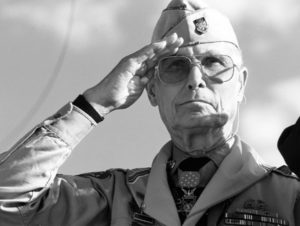
—
Marc LiVecche (PhD, University of Chicago) is the Scholar on Christian Ethics, War, and Peace and managing editor at Providence.
IMAGE CREDITS: Lionsgate
